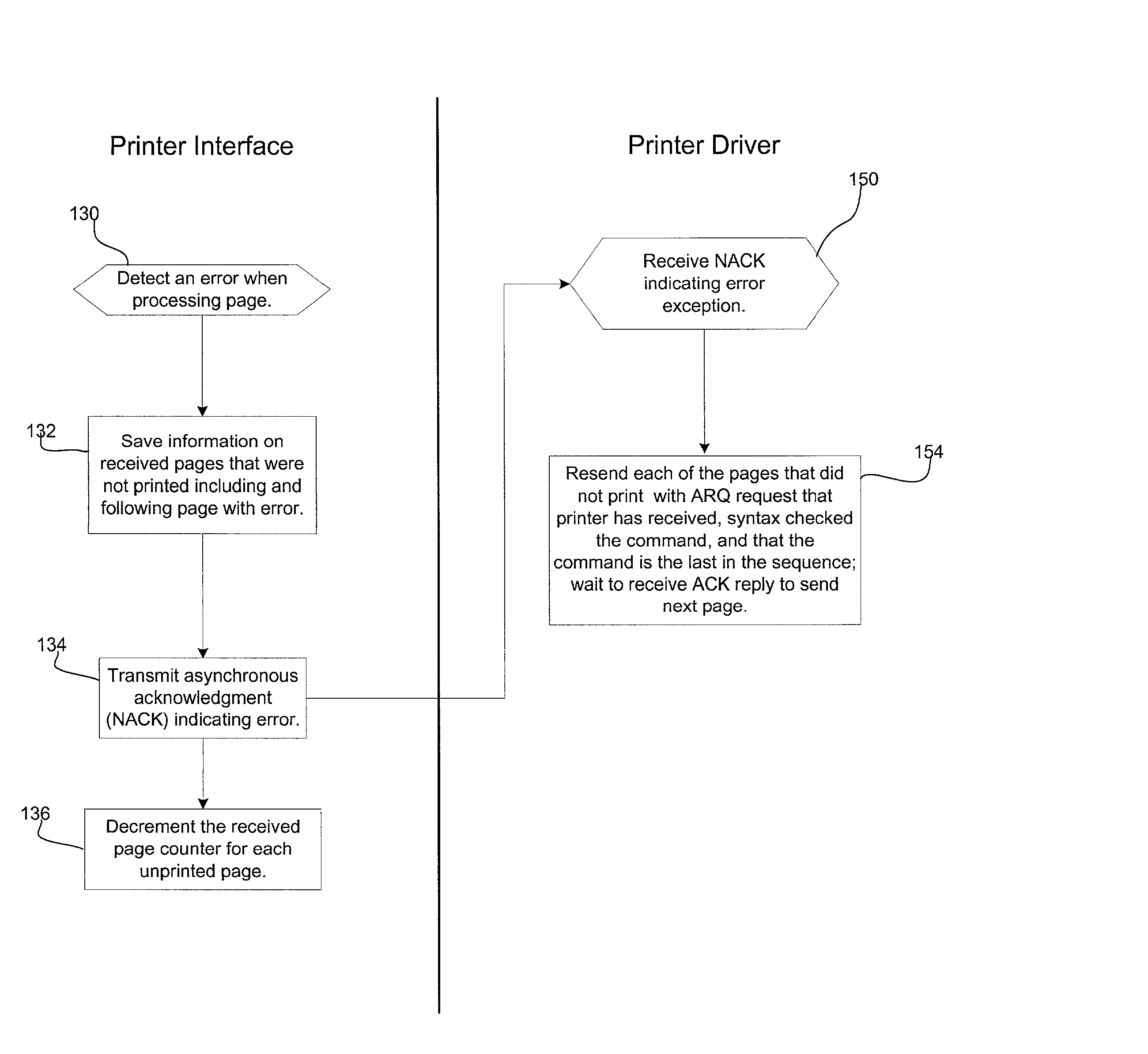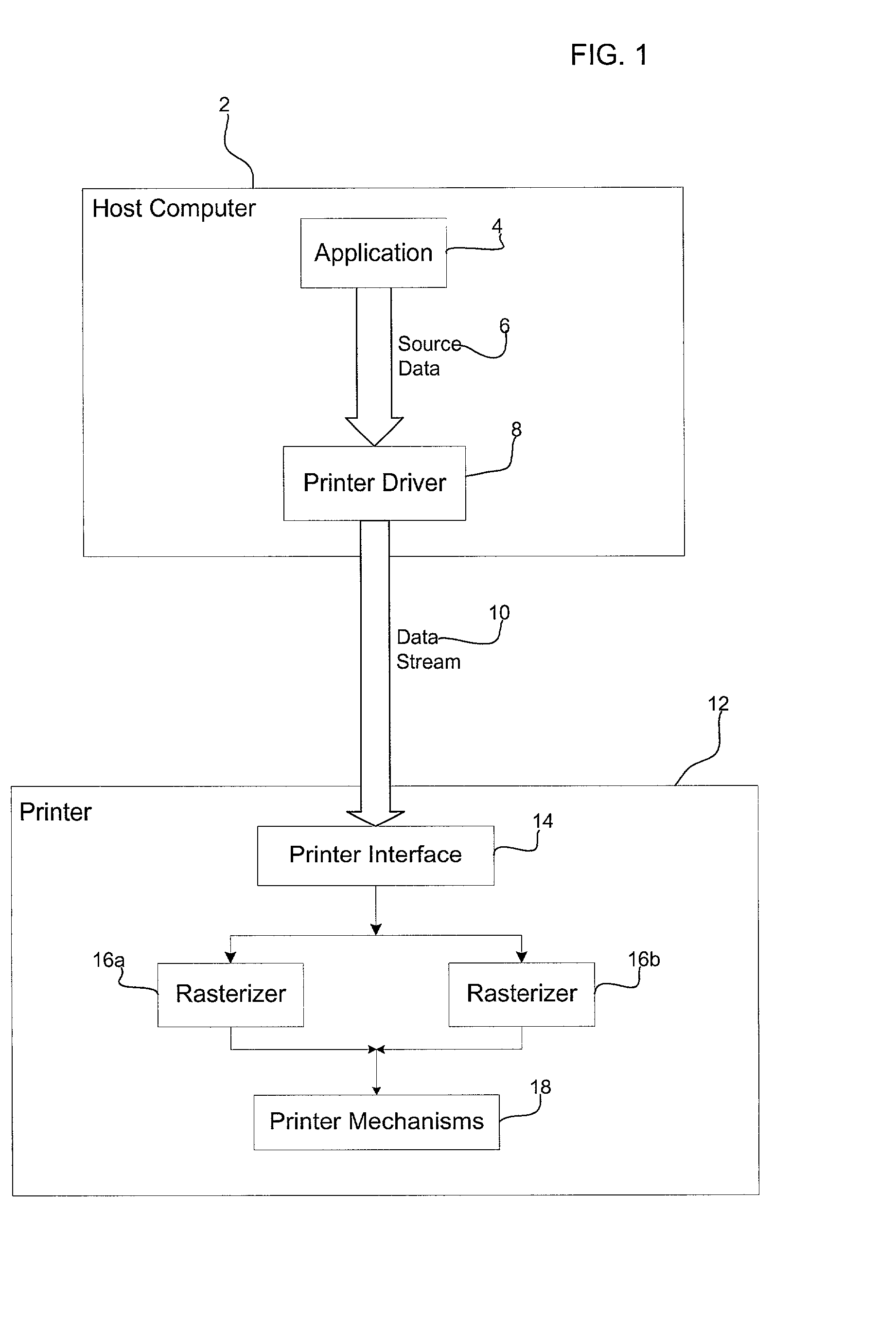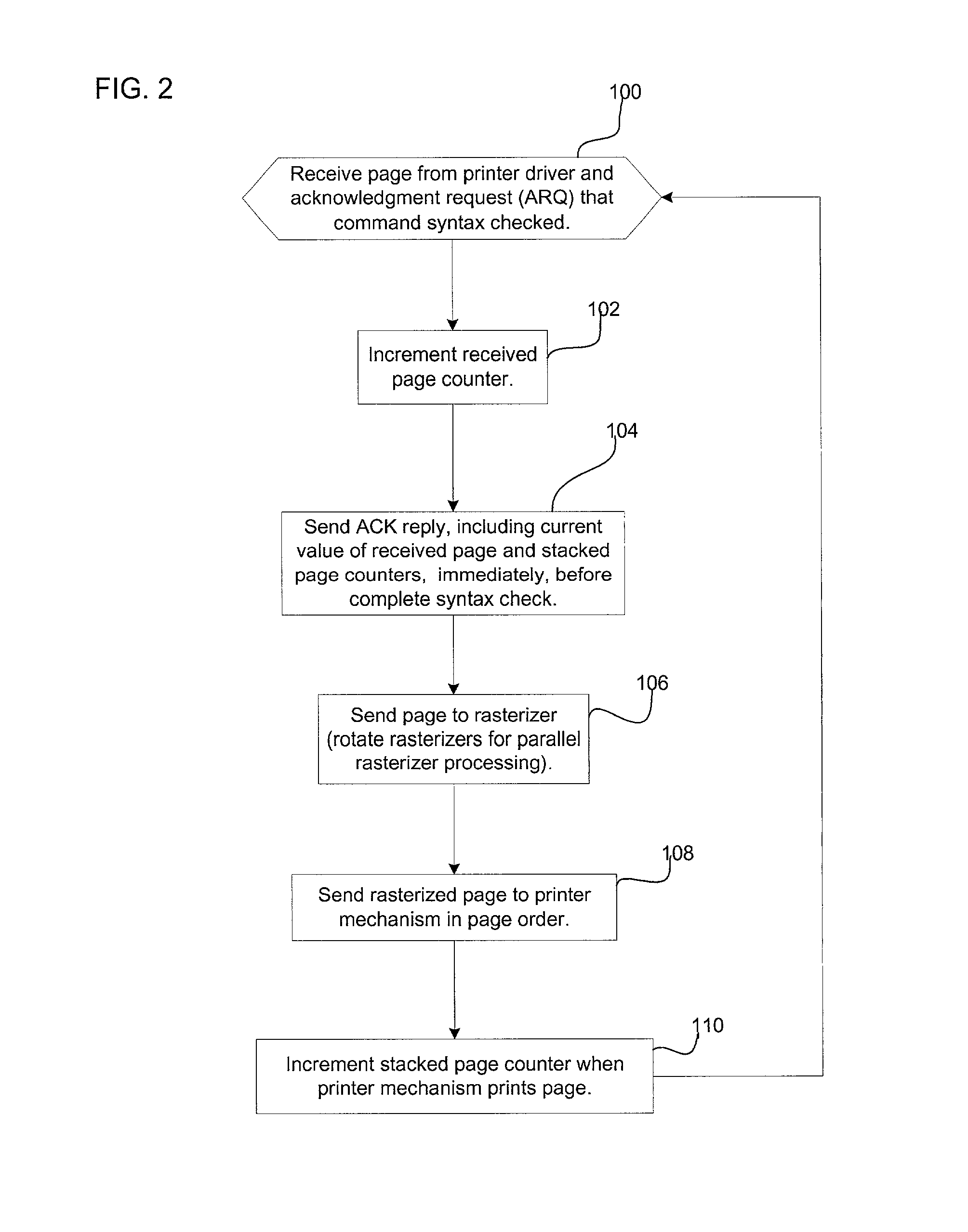Method, system, and program for responding to an acknowledgment request from a printer driver
a printer driver and acknowledgment request technology, applied in the field of method, system and program for responding to an acknowledgment request from a printer driver, can solve the problems of increasing communication, idle printing of acknowledgment requests (arq), and inability of printers to rasterize pages in parallel, so as to reduce the buffer size used, avoid idle times, and reduce the frequency that the printer driver 8 receives status.
- Summary
- Abstract
- Description
- Claims
- Application Information
AI Technical Summary
Benefits of technology
Problems solved by technology
Method used
Image
Examples
Embodiment Construction
[0010] Provided is a method, system, and program for interfacing with a printer driver. Data and an acknowledgment request is received from the printer driver. The printer driver does not send further data to print until receiving an acknowledgment reply indicating that the transmitted data passed an initial check. An acknowledgment reply is transmitted to the printer driver in response to the acknowledgment request before completing the initial check of the sent data to cause the printer driver to send further data. Data processing operations are resynchronized in response to detecting an error in the received data. The received data is rasterized and outputted.
[0011] In further implementations, the received data comprises a first received data set. A second data set is received from the printer driver after transmitting the acknowledgment reply and before rasterizing the first data set.
[0012] In yet further implementations, each received data set comprises a page of data to output...
PUM
 Login to View More
Login to View More Abstract
Description
Claims
Application Information
 Login to View More
Login to View More - R&D
- Intellectual Property
- Life Sciences
- Materials
- Tech Scout
- Unparalleled Data Quality
- Higher Quality Content
- 60% Fewer Hallucinations
Browse by: Latest US Patents, China's latest patents, Technical Efficacy Thesaurus, Application Domain, Technology Topic, Popular Technical Reports.
© 2025 PatSnap. All rights reserved.Legal|Privacy policy|Modern Slavery Act Transparency Statement|Sitemap|About US| Contact US: help@patsnap.com



